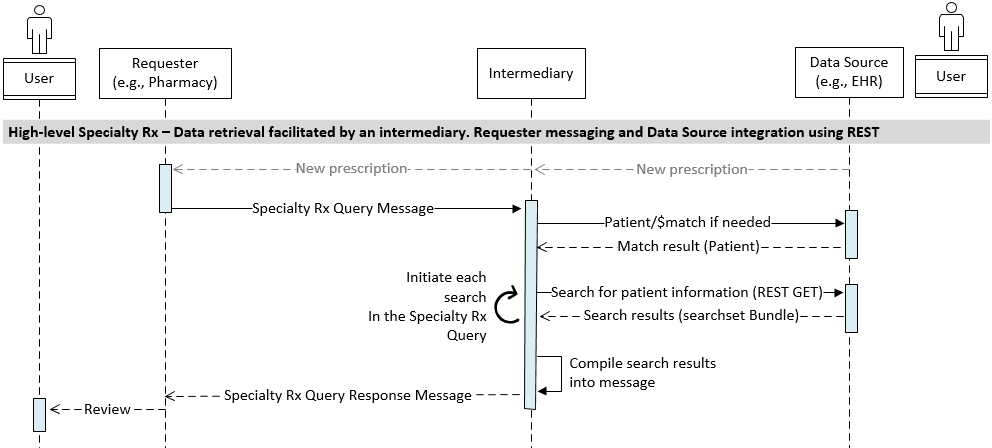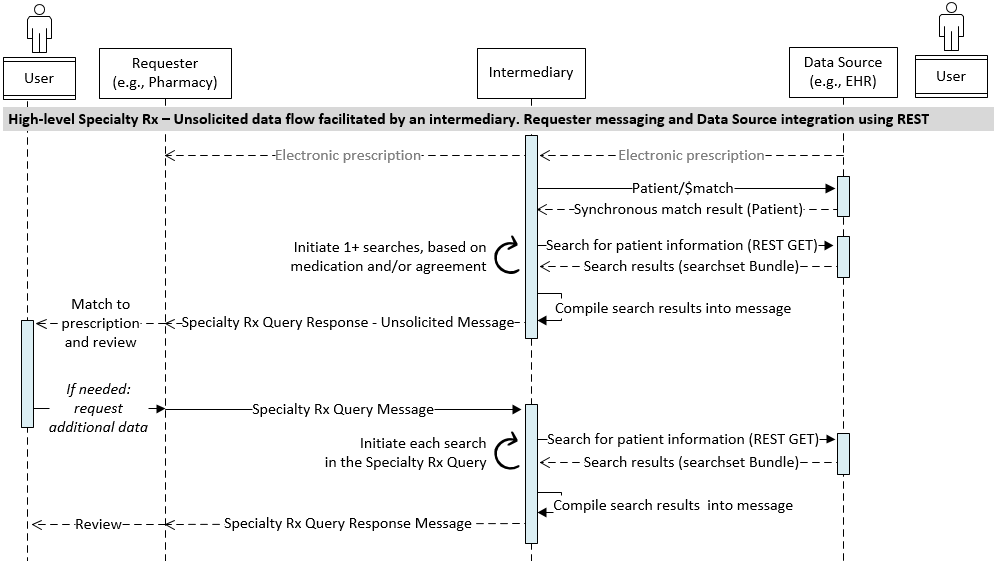Specialty Medication Enrollment, published by HL7 International - Pharmacy. This is not an authorized publication; it is the continuous build for version 2.1.0). This version is based on the current content of https://github.com/HL7/fhir-specialty-rx/ and changes regularly. See the Directory of published versions
Pharmacies in the US typically receive prescriptions through network intermediaries. Because of this, their systems do not maintain direct connections to individual prescriber system instances, and they further lack the information needed to determine the correct Data Source endpoint related to a given prescription and patient. These pharmacies are unable to submit RESTful requests directly to the Data Source.
In this situation, an intermediary may facilitate RESTful Data Source interactions on behalf of a Data Consumer system–using the routing information and connection it possesses.
Likewise, an EHR that conforms with the Specialty Rx RESTful Data Source profile may leverage an intermediary so that it can fulfill query requests from messaging-based pharmacies and transmit “unsolicited” information related to prescriptions it sends to these pharmacies.
This section describes these exchanges.
This exchange model accommodates Data Consumer systems that…
… while enabling the Data Source to respond using standard RESTful interactions.
In this flow:

In this flow, an intermediary facilitates the sending of patient information in conjunction with a new specialty medication prescription–from a RESTful Data Source to a messaging-based recipient.
This model enables patient information to be collected and sent to a pharmacy or other party in FHIR message form, with the Data Source interacting solely through standard RESTful requests.
An intermediary facilitates the process as follows:
